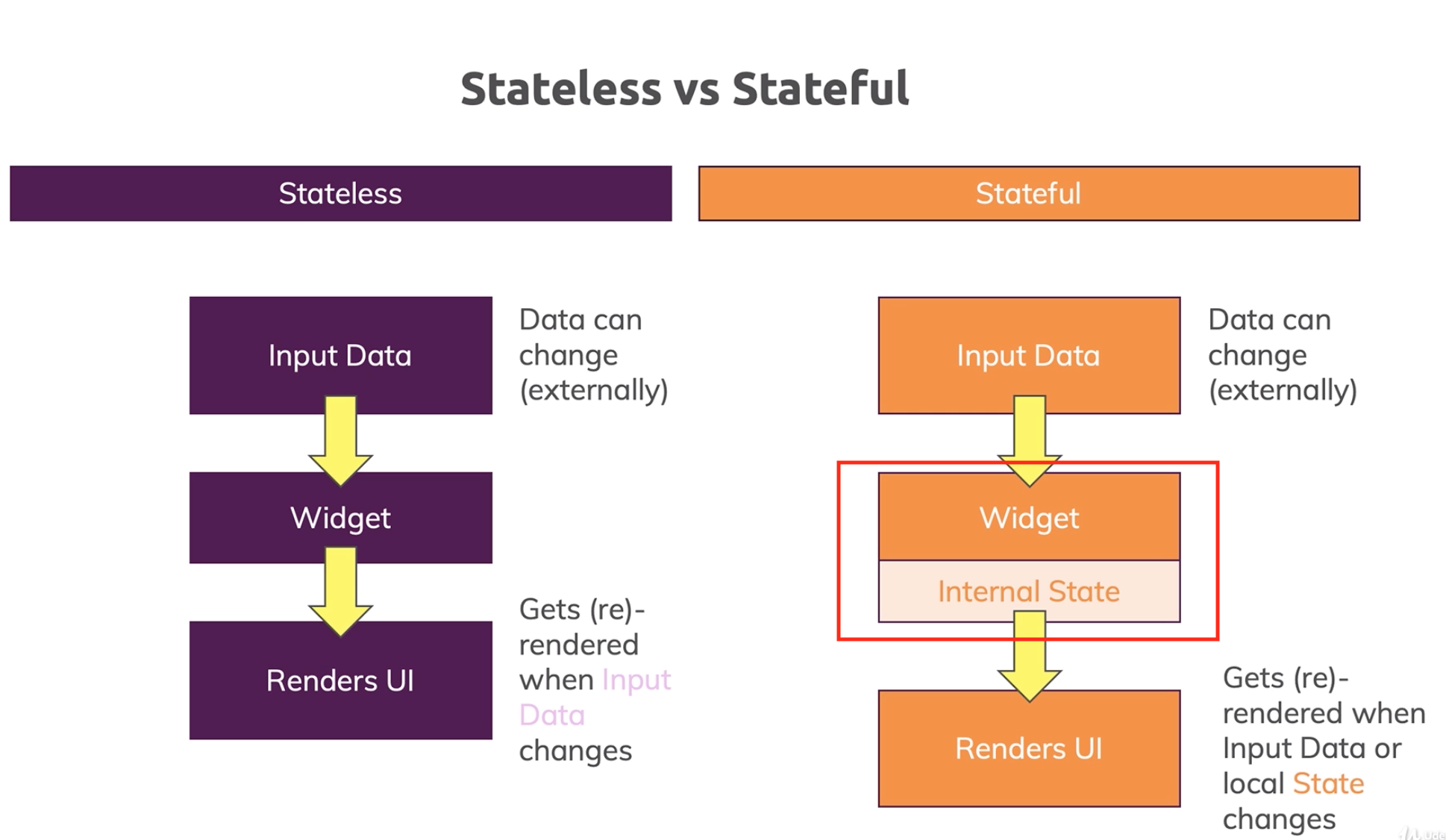State is information that (1) can be read synchronously when the widget is built and (2) might change during the lifetime of the widget. It is the responsibility of the widget implementer to ensure that the State is promptly notified when such state changes, using State.setState.
A stateful widget is a widget that describes part of the user interface by building a constellation of other widgets that describe the user interface more concretely. The building process continues recursively until the description of the user interface is fully concrete (e.g., consists entirely of RenderObjectWidgets, which describe concrete RenderObjects).
Stateful widget are useful when the part of the user interface you are describing can change dynamically, e.g. due to having an internal clock-driven state, or depending on some system state. For compositions that depend only on the configuration information in the object itself and the BuildContext in which the widget is inflated, consider using StatelessWidget.
StatefulWidget instances themselves are immutable and store their mutable state either in separate State objects that are created by the createState method, or in objects to which that State subscribes, for example Stream or ChangeNotifier objects, to which references are stored in final fields on the StatefulWidget itself.
A stateless widget is a widget that describes part of the user interface by building a constellation of other widgets that describe the user interface more concretely. The building process continues recursively until the description of the user interface is fully concrete (e.g., consists entirely of RenderObjectWidgets, which describe concrete RenderObjects).
Stateless widget are useful when the part of the user interface you are describing does not depend on anything other than the configuration information in the object itself and the BuildContext in which the widget is inflated. For compositions that can change dynamically, e.g. due to having an internal clock-driven state, or depending on some system state, consider using StatefulWidget.


InheritedWidget; Which can makeStatelessWidgetupdate. – Loudish